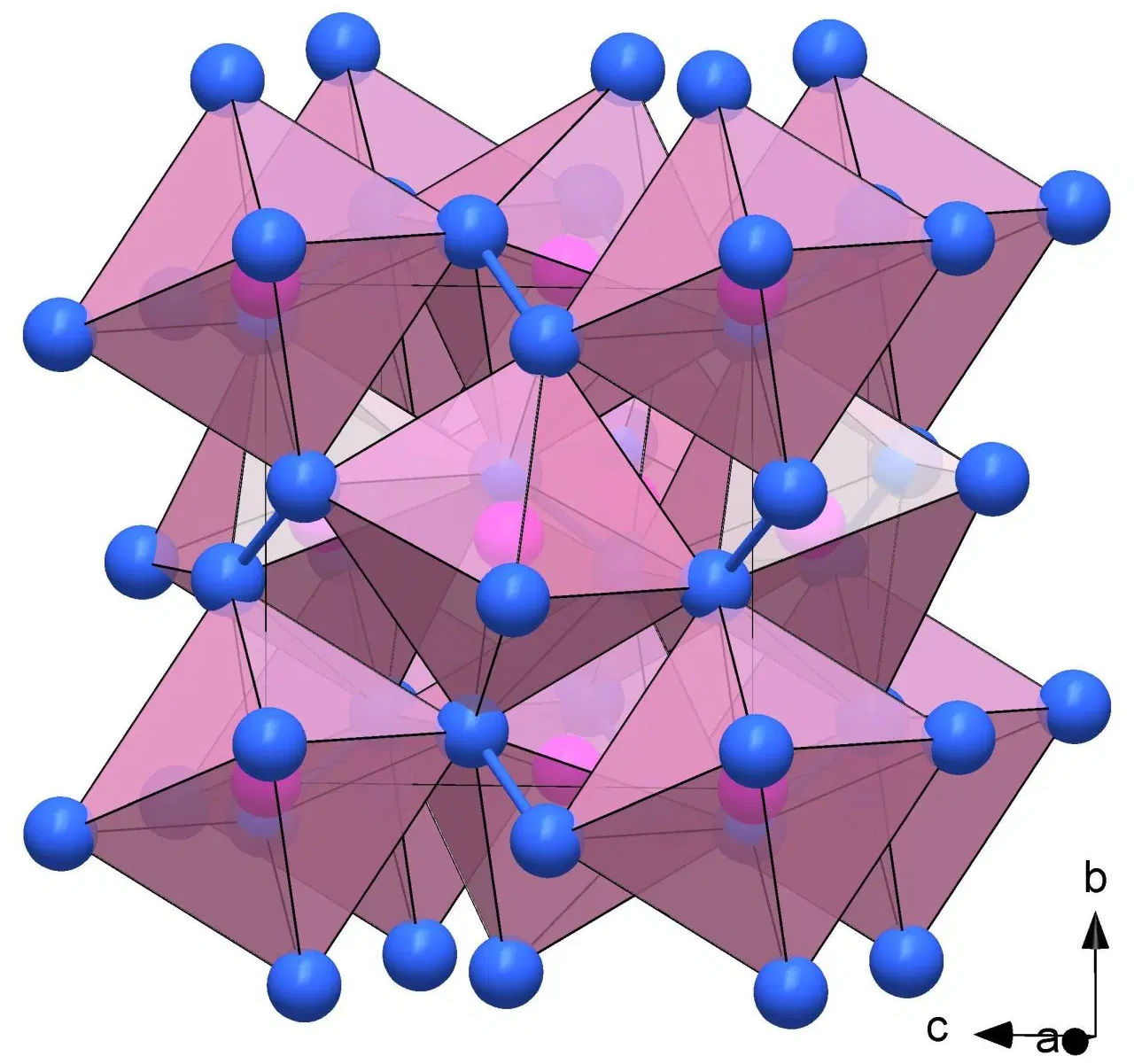Nitrogen and non-metallic elements are joined by covalent bonds to form non-metal nitrides, which are compounds. They have progressively become the center of materials research due to their technologically interesting features.
 Empirically demonstrated for the first time: the structure of PN₂ consisting of PN₆ octahedra. Image Credit: Dominique Laniel.
Empirically demonstrated for the first time: the structure of PN₂ consisting of PN₆ octahedra. Image Credit: Dominique Laniel.
An international group led by academics from the University of Bayreuth reveals previously undiscovered phosphorus-nitrogen compounds created under extreme pressures in the journal Chemistry - A European Journal.
They comprise structural units whose existence could not previously be objectively verified. The discovery highlights the enormous, as-yet immense potential of high-pressure nitrogen chemistry research.
At a pressure of 72 gigapascals, the investigators excelled in producing a completely undiscovered modification of the phosphorus nitride P3N5, the polymorph δ-P₃N₅. The diamond anvil cell generated phosphorus nitride PN2 at 134 gigapascals. Both compounds are ultra-incompressible materials with bulk moduli greater than 320 GPa.
Through synchrotron X-Ray diffraction analysis and density functional theory calculations, the scientists uncovered a crucial reason for this high strength: crystal structures of δ-P₃N₅ and PN2 consist of a dense network of PN6 octahedra with a phosphorus atom encircled by six nitrogen atoms. The presence of these structural components was previously only suspected, but they have now been objectively verified for the first time.
When the compression pressure was lowered, the polymorph δ-P₃N₅ converted into a previously discovered modification of P3N5: the polymorph α′-P₃N₅ was created at 7 gigapascals. This is a novel solid substance that is stable under normal environmental conditions.
This phosphoronitride’s crystal structure is similarly remarkable, consisting of PN4 tetrahedra: The center of these pyramid-shaped structural units is occupied by a phosphorus atom, while the four “corners” are each occupied by a nitrogen atom. α′-P₃N₅ has a substantially higher density than the well-known polymorph α-P₃N₅, which is already being researched as a potential industrial material.
The α′-P₃N₅ formed on decompression of δ-P₃N₅ exemplifies how nitrogen compounds with highly interesting properties can be discovered via a detour of high-pressure syntheses. Further investigations should now follow to explore potential applications of this new material.
Dr. h.c. Natalia Dubrovinskaia, Laboratory of Crystallography, University of Bayreuth
Dr. h.c. Natalia Dubrovinskaia adds, “With our publication, we want to encourage more high-pressure and high-temperature research on non-metal nitrides – which have been largely neglected in comparison with metal nitrides. New studies in this exciting field can significantly expand our understanding of nitrogen chemistry. They will also potentially contribute to the discovery of recyclable materials for everyday products.”
Along with the Bavarian Research Institute of Experimental Geochemistry & Geophysics (BGI) and the Laboratory of Crystallography at the University of Bayreuth, various other research partners also took part in the research: the LMU Munich, the University of Edinburgh, the University of Linköping, Shandong University in Jinan, China, the German Electron Synchrotron (DESY) in Hamburg, the European Synchrotron Radiation Facility in Grenoble, and the Center for Advanced Radiation Sources at the University of Chicago.
Journal Reference:
Laniel, D., et al. (2022) Revealing Phosphorus Nitrides up to the Megabar Regime: Synthesis of α′-P3N5, δ-P3N5 and PN2. Chemistry – A European Journal. doi.org/10.1002/chem.202201998.